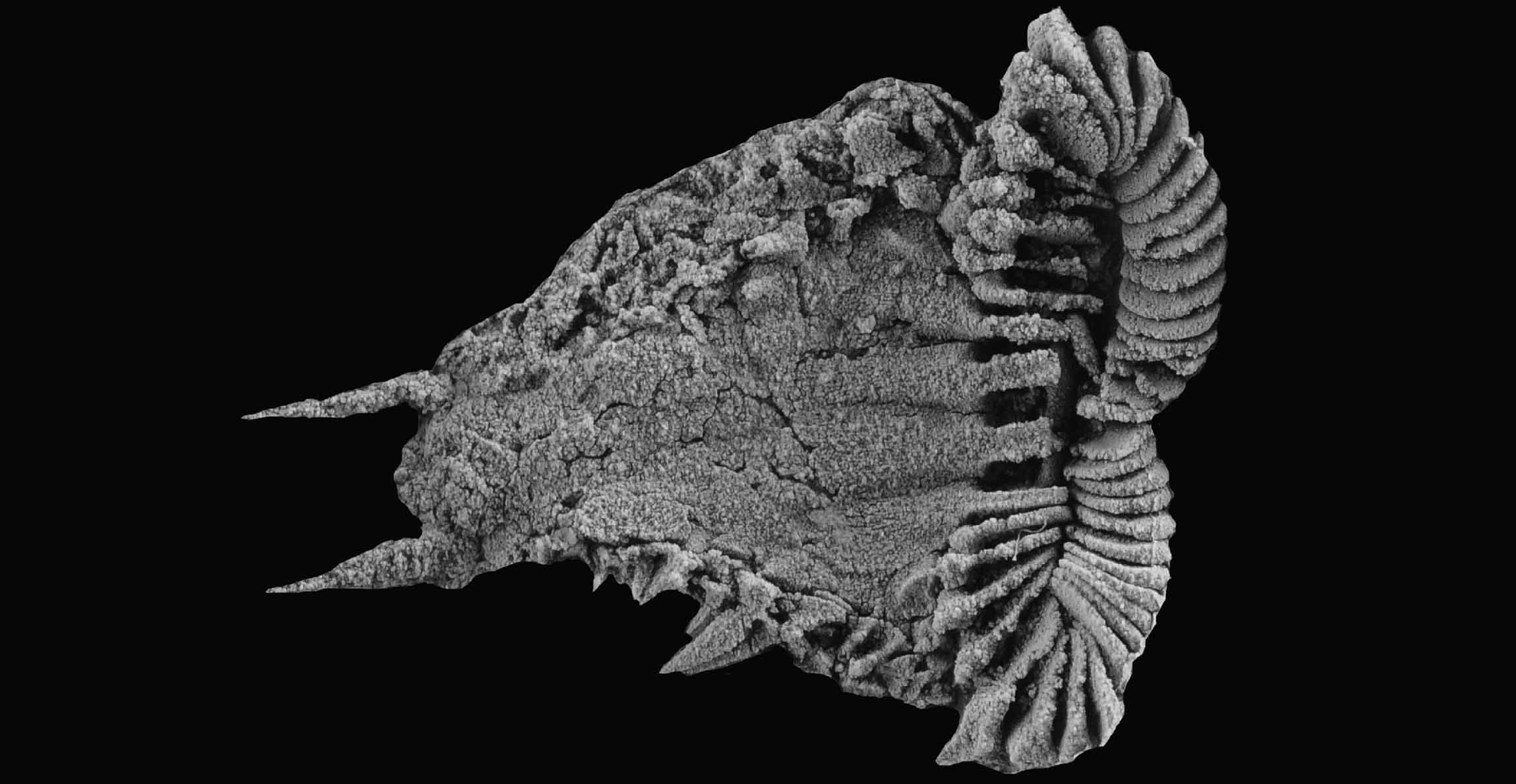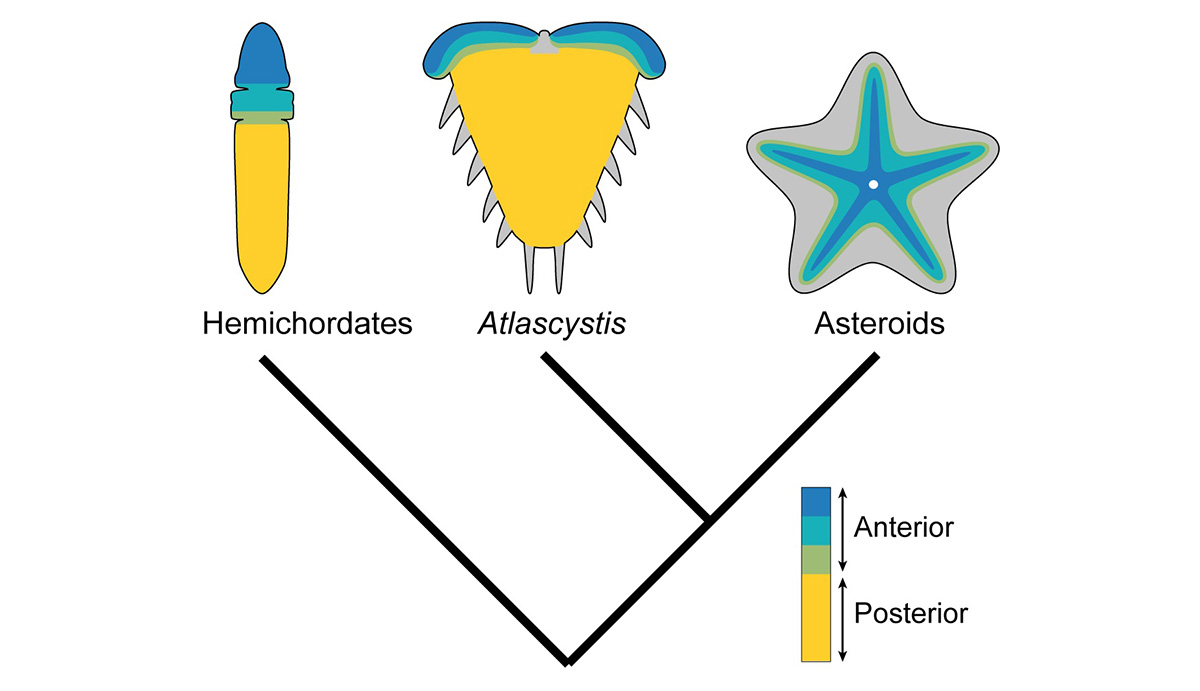Starfish are some of the most recognisable animals in the world.
But their simple appearance belies an evolutionary mystery - how did these animals evolve such an unusual shape?
A new fossil discovery may have cracked the case.

The newly described fossils show how the first echinoderms likely looked and how they evolved from a bilateral ancestor ©Woodgate et al. 2025
Starfish are some of the most recognisable animals in the world.
But their simple appearance belies an evolutionary mystery - how did these animals evolve such an unusual shape?
A new fossil discovery may have cracked the case.
The shape of starfish and their relatives is unique in the animal world.
Most animals, including people, have bilateral symmetry, in which one side is usually symmetrical to the other. However, starfish have pentaradial symmetry, with each arm typically repeated five times around its centre.
What’s really puzzled biologists is how this unique appearance evolved from more conventional bilateral ancestors. This is where a set of new fossils unearthed in Morocco comes in.
The fossils, now described as a new species called Atlascystis acantha, has bilateral symmetry like us, but is an ancient relative of all starfish alive today. The species belonged to a group of animals called echinoderms, which includes starfish and their close relatives, such as sea cucumbers, sea lilies, sea urchins and brittle stars.
The new fossils of this ancient echinoderm are helping to show how their modern counterparts went through a series of evolutionary steps before settling on the five arms they typically now have.

Starfish are unusual in the animal world for having a five-fold symmetry ©Adam Ke/Shutterstock
One of our researchers, Dr Imran Rahman, has been focused on understanding the early evolution of echinoderms. He was involved in studying the new fossils and using it to recreate the evolutionary history of modern starfish and their relatives.
“We found clear evidence for a characteristic that links this fossil to all other echinoderms, both extinct and living, resolving a long-standing debate about their earliest evolutionary history,” explains Imran.
“This allowed us to carry out an analysis of its evolutionary relationships, which showed that Atlascystis is quite close to the base of the echinoderm tree of life. What we then see through the fossil record is a transition from bilateral symmetry, to asymmetry, then threefold symmetry, before we arrive at the pentaradial symmetry that defines all living echinoderms.”
For the first time ever, scientists now understand how starfish and their relatives evolved their unique body plan. The results have been published in the journal Current Biology.
Starfish are an ancient group of living animals that first appear in the fossil record some 450 million years ago. Today, echinoderms are represented by roughly 7,600 species and can be found in every ocean on Earth.
One of their defining characteristics is their five-fold symmetry. To put this into context, there are around 2.13 million described animal species on Earth and 99% of these show bilateral symmetry. This positions echinoderms as extreme outliers.

The fossils of Atlascystis were unearthed in the arid mountains of Morocco © Samuel Zamora
This highly unusual biology and body plan has not gone unnoticed. Starfish have been the subject of intense interest from evolutionary biologists for centuries.
The closest living relatives of echinoderms are a group known as hemichordates, which includes animals such as acorn worms. Scientists have previously hypothesised that the ancient ancestor of starfish would have looked somewhat similar to these worm-like organisms.
This is supported by the fact that all echinoderms start their lives as bilaterally symmetrical larvae. They then metamorphose into adults, developing their more recognisable pentaradial form. The new fossils from the mountains of Morocco, which preserve a range of individuals of different sizes, help to fill in this evolutionary gap.
When Atlascytis was alive roughly 500 million years ago during the Cambrian Period, it would have lived on a calm, muddy seafloor. This silty environment helped to preserve the species in exquisite detail, allowing Imran and his colleagues to reconstruct how echinoderms evolved from bilateral to five-fold symmetry.
“What’s interesting about these fossils is that they’re telling us something about how that change first occurred,” says Imran. “We don’t have the larval stages for Atlascystis, but we can infer based on the fact that they have this bilateral symmetry as adults that they probably underwent a much less marked metamorphosis than living echinoderms.”
“So rather than completely reorganising the anterior-posterior axis during their development, they probably retained the larval body axis into the adult form. That meant they didn’t have to squish their internal organs, grow new openings or twist the whole body around in the sorts of weird and wonderful ways we see in modern echinoderms.”

The newly described Atlascystis has been placed right near the bottom of the echinoderm evolutionary tree ©Imran Rahman
By placing Atlascystis in the echinoderm family tree, researchers were able to show the somewhat circuitous route that starfish took to end up with their characteristic five arms.
It involves structures called ambulacra, from which the arms of the starfish were eventually derived. Through a process of a step-like changes, Imran could track the development of ‘arms’ through time, finding they didn’t although not necessarily always go in the direction that you might expect.
“So originally the echinoderms had two ambulacra,” says Imran. “There is then a reduction to one, before what we think is a duplication event of that one remaining arm-like structure to give rise to three and then later to five ambulacra.”
This seems to have solved the mystery of how the starfish got its arms. But it doesn’t necessarily answer the ‘why’. Imran and his colleagues are still in the dark as to why starfish and their relatives settled on five-fold symmetry rather than any other form.
“That’s the other question that keeps me up at night,” Imran muses. “Why do they have five-fold symmetry?”
“As I said already, there’s no other animals alive today that have that kind of symmetry, so we don’t really have a good answer to that question.”

Find out more about why we need to protect the oceans, find themed events, and read about the pioneering work of the Museum's marine scientists.
Don't miss a thing
Receive email updates about our news, science, exhibitions, events, products, services and fundraising activities. We may occasionally include third-party content from our corporate partners and other museums. We will not share your personal details with these third parties. You must be over the age of 13. Privacy notice.
Follow us on social media